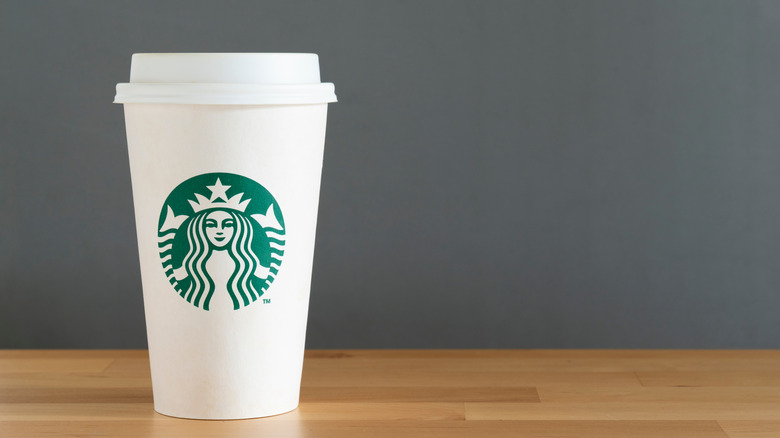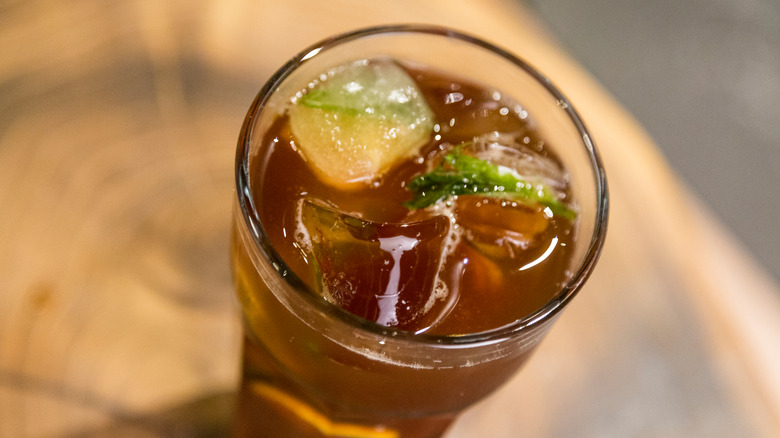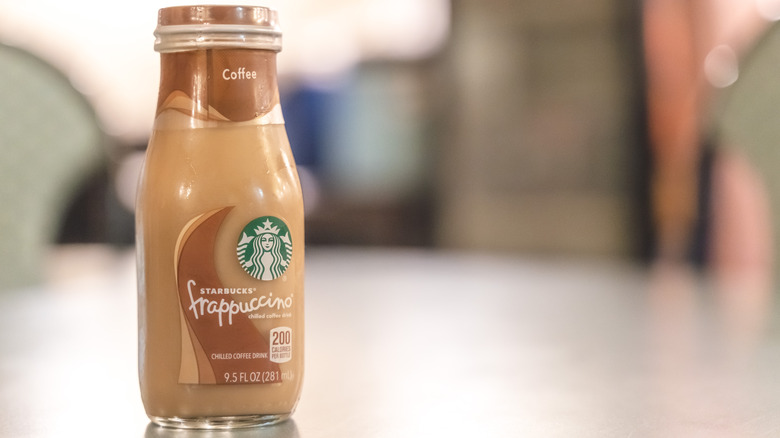Starbucks' Failed Coffee-Soda Hybrid
Since opening its first shop in 1971, Starbucks has enjoyed massive success and created a distinct menu. Along the way, there have been a few duds that failed to gain the traction that more popular items enjoy. From discontinued luxury hot chocolate to the flop that was the beer-inspired latte, customers have not always fallen in love with every creative take on coffee that Starbucks has sold. One great example of a poorly received Starbucks menu item lies in the infamous Mazagran, a discontinued coffee-soda mashup in collaboration with PepsiCo.
In 1994, Starbucks ran a short campaign across the state of California during which it sold this fizzy drink. Mazagran quickly divided residents in Santa Monica, one of the first cities that began to sell this beverage, over its unique flavor and mouthfeel. While Starbucks faced great success in the 1990s due to the surge in popularity that coffee received during that decade, it wasn't enough to save Mazagran. Cafes and stores stopped selling it shortly after its release. To date, Starbucks has announced no rerelease plans for the beverage.
The origins of the name Mazagran
The name that Starbucks chose for this short-lived beverage has an interesting backstory. During the 1800s, French soldiers created mazagran in a town of the same name in Algeria. At the time, the French tended to mix coffee with brandy, a liquor not readily available in Algeria. To make up for this missing ingredient, the French army mixed coffee with water. Since then the tradition of sparkling water caught on in the Mediterranean. The trend made its way to Portugal, where people added lemon juice to chilled coffee.
Starbucks drew inspiration from these origins during the marketing for Mazagran. While Starbucks simply labeled the bottles as "sparkling coffee," the box art for these drinks featured the image of a vintage map of the Algerian coast with hasty pastels and a retro feel. The standard drink had hints of citrus and spices in it but variants such as berry and vanilla were also available for sale. None of these flavors made Mazagran popular with customers, however.
Mazagran's enduring legacy at Starbucks
While even Starbucks executives consider the Mazagran campaign a bump in the road, the company did receive a rather large upside from this drink. During the production of Mazagran, the then-leading researcher for the company Don Valencia created Starbucks' coffee extract for the carbonated refresher. This concoction stayed in use for the bottled Frappuccino which came out in 1996 shortly after Pepsi and Starbucks decided to launch a packaged version of the popular coffee drink.
Unlike the Mazagran, the bottled Frappuccino received immediate critical acclaim. To this day it is still sold in stores and Starbucks cafes around the world. Starbucks doesn't shy away from including the failed experiment of Mazagran as part of its history, though. Taylor Clark interviewed Howard Schultz, the previous Starbucks CEO, for his book "Starbucked." During the interview, Clark noticed that Schultz had a display of Mazagran on his desk. According to Clark, Schultz said he purposely put them on his desk to remind him that even industry giants like Starbucks make mistakes.



